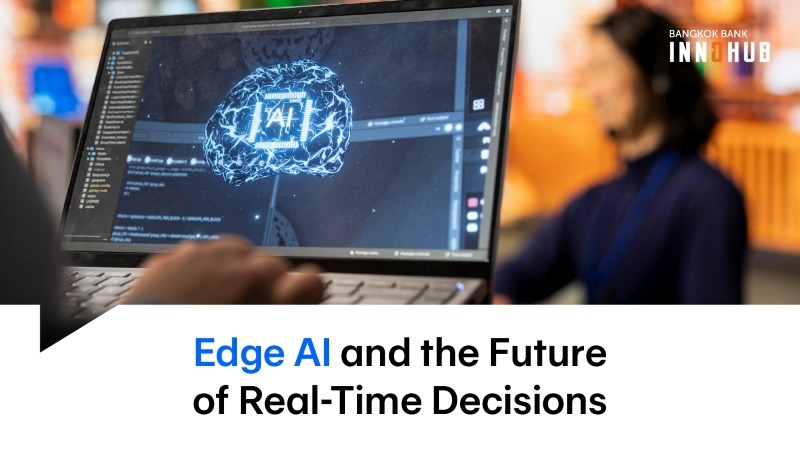It seems like every few weeks, a leading AI company announces the construction of a new gargantuan data center to house the supercomputer that will train its next-generation model. These power-hungry data crunchers learn what they can from the internet, then compress their findings into an algorithm that fits within a few terabytes. When you ask your favorite AI a question, your query goes to a separate set of computers, called an inference cluster, that runs your input through the algorithm and sends you the result.
When all goes well, the result feels like magic. But what if you’re in a self-driving car that needs to make split-second decisions? An inference cluster located halfway around the world won’t be very useful when a child runs right in front of your car outside the school playground. Nor will any remote algorithm help you when you’re moving through a tunnel, or working underground without a mobile signal. There are also security questions surrounding centralized AI, and many businesses in sensitive industries would prefer not to send key data over the air to externally run platforms.
The solution is edge AI — locally run algorithms that are specially tailored to the particular use cases of each device that operates them. ChatGPT may need to know why the Roman Empire fell in the year 476, but your heart-rate monitor doesn’t. Edge AI trains on precisely what it needs to know to do its job, and strips away the rest. This type of specialized AI will prove increasingly essential as we develop new categories of smart devices balanced on the edge that links the physical and digital worlds.
Intelligence for the real world
Edge AI is the practice of running algorithms, and sometimes doing lightweight learning, directly on devices rather than sending raw data to the cloud for centralized processing. These devices, installed in the real world as sensors, cameras, and onboard computers, analyze their own data on the spot. This localization reduces latency while strengthening privacy and ensuring resilience in low-connectivity environments. Once processed, the data is used to inform automated decision-making on location.
With billions of IoT devices, video streams, and sensor networks coming online each year, the volume, velocity, and variety of data at the edge are exploding. By 2030, most enterprise data will be processed outside traditional data centers.
Factories will use edge AI systems to not only operate but also monitor their equipment, initiating timely pauses for maintenance on the assembly line when parts become worn or misaligned. Security systems will detect anomalies and alert relevant personnel in real time, keeping business assets closely guarded at all times. Other use cases for edge AI include:
- Smart Cities – Traffic systems adjusting in real time.
- Healthcare – Wearables detecting abnormalities instantly.
- Telecom & Finance – Real-time fraud detection and network optimization.
- Wildlife Protection – Sensors preventing collisions between trains and animals.
These and myriad other use cases will become commonplace across industries as the age of AI matures. For companies to get ahead, they will need to outperform their competitors at utilizing the key features of edge AI, namely:
- Speed: Edge AI enables split-second decisions in autonomous driving, drones, and robotics. When managed well, users experience fewer safety failures and smoother automation, enabling greater trust in autonomous systems.
- Resilience: Functioning seamlessly even when offline, edge AI lets critical services run without disruption, preventing accidents or operational loss.
- Privacy & Security: Local processing of sensitive data (such as health, identity, and biometric information) minimizes its exposure, as long as the appropriate data handling processes are in place.
Data overflow
Of course, decentralization brings its own challenges, as the collected data has to go somewhere. With connected devices multiplying alongside rising expectations for instant response, today’s cloud is hitting its physical and practical limits. Businesses must improve their ability to compress the useful data for storage, and mark the rest for deletion, as they expand their edge AI capabilities.
Other challenges include the need to update and manage large numbers of distributed devices. Think of your phone updating its software and security profile every couple of months, and then try multiplying that by all the billions of other IoT devices out in the wild that need similar care. Every connected node presents a potential security risk if not managed properly, and neglect has a habit of creeping in as time goes on.
Likewise, on-device processing can push both the power and hardware limits on small sensors. Though computers continue to get smaller and more efficient, edge devices nevertheless lack the economies of scale that centralized inference clusters can provide.
Broader implications
Edge AI marks a new phase of digital infrastructure. Just as the cloud helped define the last decade, the ability to process intelligence at the edge will define the next – shaping industries from healthcare to transportation and beyond.
This evolution from the global to the local promises not only operational efficiency but also a safer, more connected world where real-time intelligence prevents risks before they arise. The road ahead won’t always be easy, but at its best, edge AI bridges the gap between digital insight and physical reality, empowering devices to act with human-like intuition in every corner of our lives.




